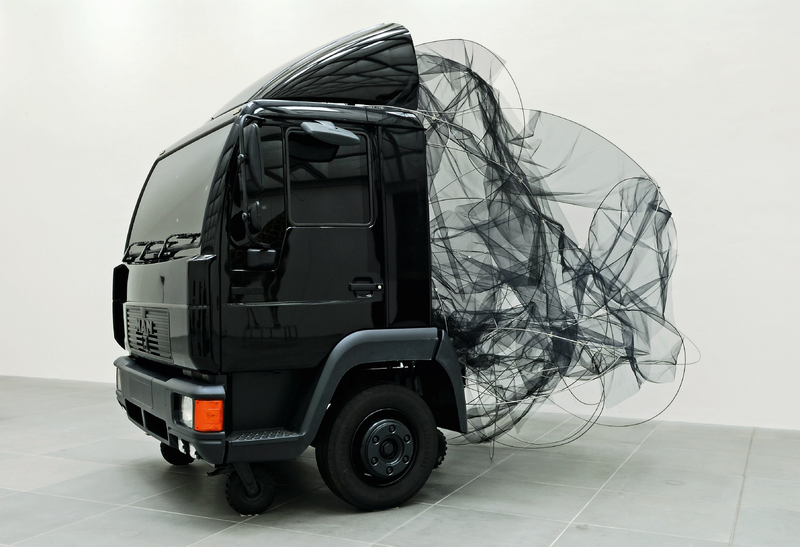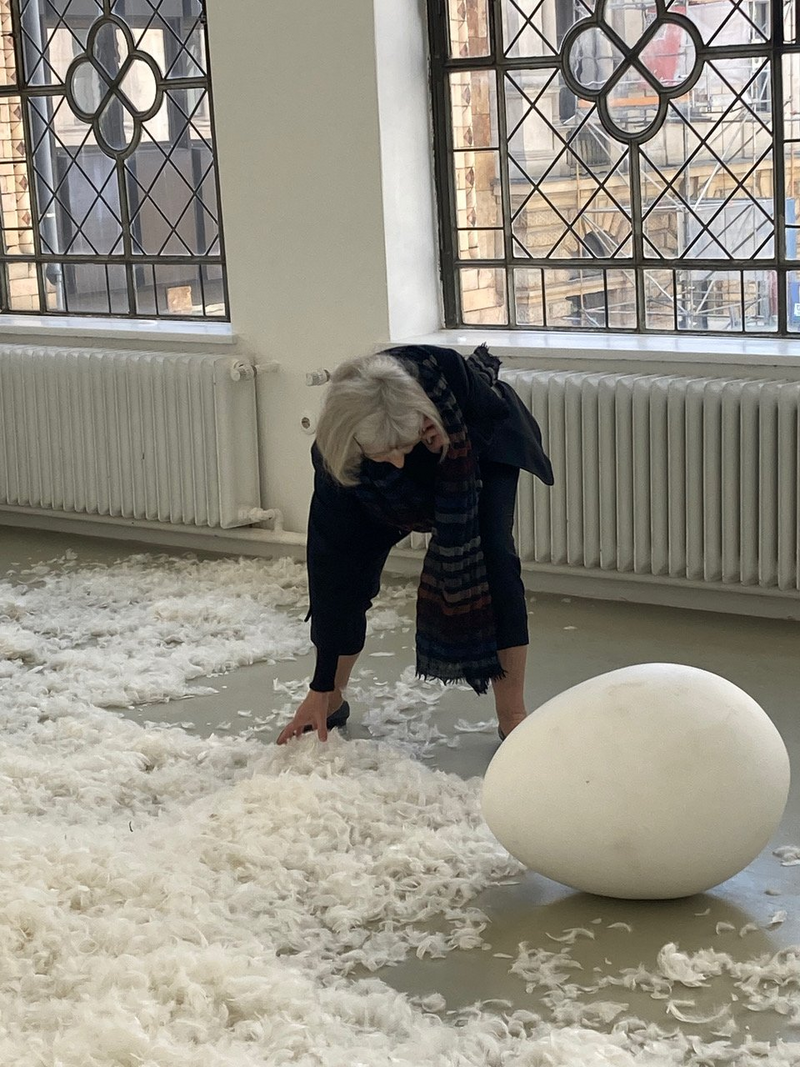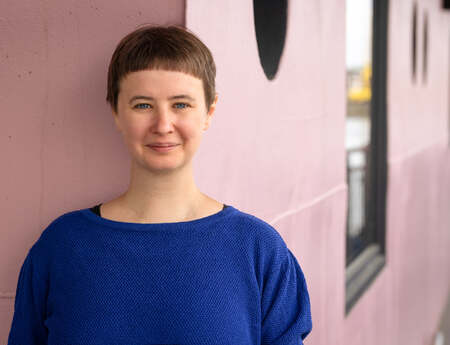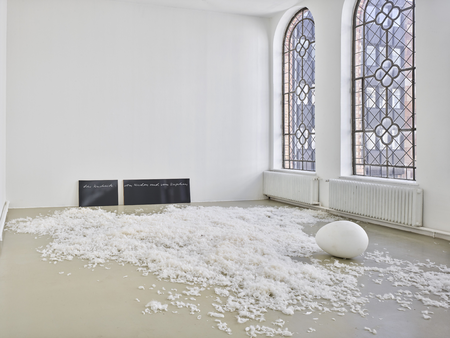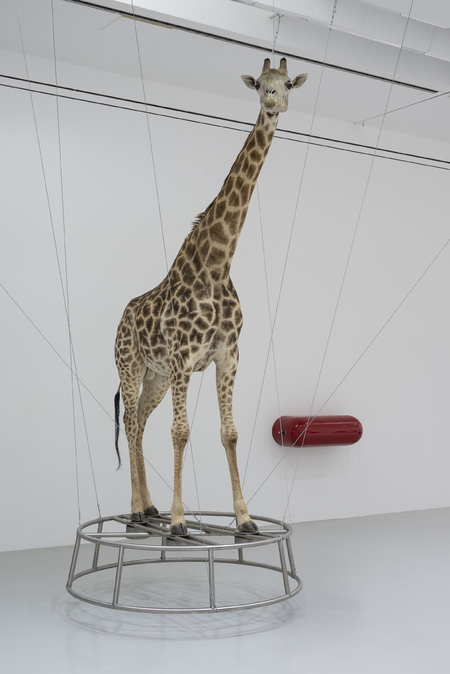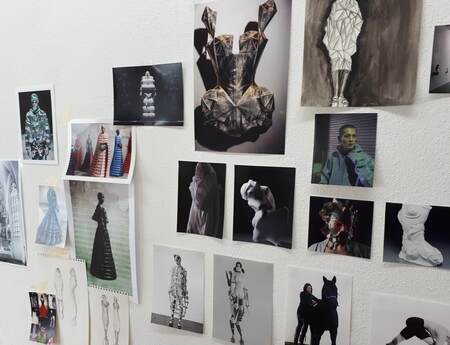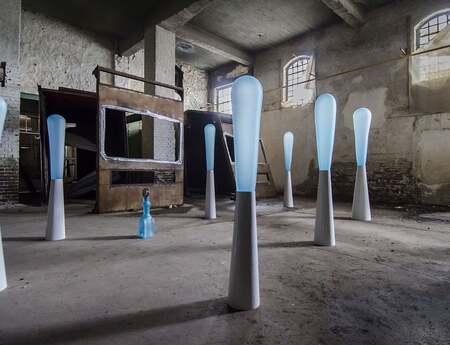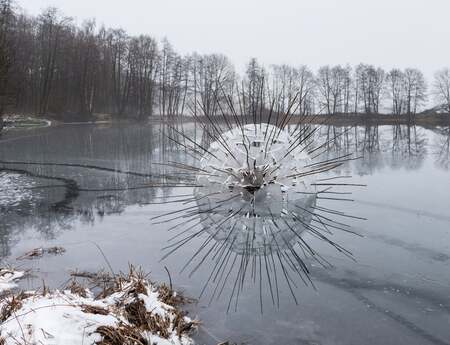As Delightful as Possible
Christiane Möbus’ first works of art date back to a time when galleries thought that having just one female artist on their list was sufficient to fulfil the necessary quota of women in their ranks. That her works have by no means lost their current relevance was demonstrated in the impressive retrospective exhibition Seitwärts über den Nordpol (Eng. Sidewards across the North Pole) in Hanover this summer. Christiane Möbus spoke to us about ideas which develop with time, about luck being a factor, and about how one can come to have a giraffe.
Ms Möbus, in honour of your 75th birthday the Sprengel Museum as well as the Kunstverein Hannover presented your work this year. When we take a glimpse back to the beginning: Where do your artistic roots lie?
I think they begin in childhood. They start with having possibilities and also with the possibilities that one doesn’t have. Especially finding ways to occupy oneself, to observe the world and then to draw conclusions accordingly ... Later I became very interested in architecture; I simply wanted to build houses and, of course, I already had the appropriate dreams ready and waiting. I wanted to go to Gropius, at Harvard University. One always chooses the great role idols. But then he died and I thought: To whom will I go now?
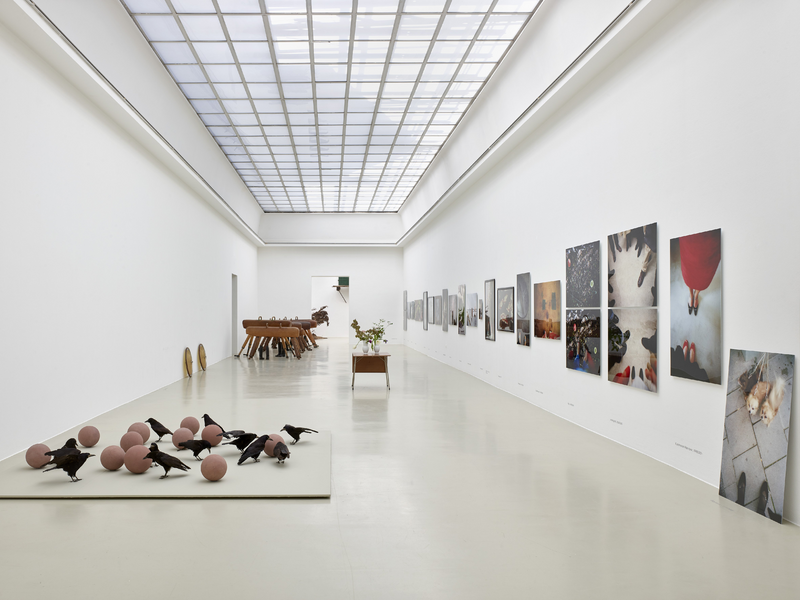
To whom did you go?
My second choice would have been Le Corbusier but he had already died before Gropius. So, I applied for courses in Braunschweig: Architecture at the Technical University as well as Visual Arts at the University of Fine Arts. I sat entrance exams for both – and was accepted by both.
This was of course a minor catastrophe: What am I going to do now? So as not to live at my parents’ expense for too long, I decided to do the shorter course. That’s how I came to fine art. Even though that wasn’t my aim at all.
How did things continue after your studies?
Working the way I did at that time, it wasn’t easy to sell my works. It became clear to me that I couldn’t make a living from art. For this reason I worked full-time at a high school. And then I had the good fortune to be able to lecture at the University. Here I had much more freedom to organise my time to create my works of art.
Why wasn’t it so easy; what were specific difficulties?
Just as I had finished my studies at the University, I applied to, for example, the Association of Artists using Das unnötige Verlöbnis der Frau Holle mit dem Schamanen – oder – a new life. (Eng. The unnecessary Betrothal of Frau Holle to the Shama – or – a new life.) This was a performance in a space open to the public, without any invitation to an audience. The people who happened to be there were, of course, totally unprepared and this was delightful for me.
I submitted photos of the performance as well as the wings used in it to the Artists Association’s Exhibition. After my artwork was rejected, I met one of the members of the jury and asked, “Why have I, with my work of art, been rejected?” The following was said to me: “We didn’t know what we should do with it!” Can you imagine that? They had no idea what to do with it.
Another time I presented my works to a gallery and they said to me: We’ve already got one woman in our program! So, one had to live with such incidents. Or, I wanted to borrow equipment at the university for a film. I was to join the colloquium where we wanted to discuss the project. There was a round table with students, only men and all about my age, sitting at it and the Professor of Film then said to me, literally, and such things simply stay in one’s memory, and it’s a hammer of a sentence: “Why do you as a woman want to produce a film?”
That is really bitter.
That is bitter, but I didn’t let it influence me any further. I could still make this film today. It is still relevant.
What happens to such unrealised projects that you have carried around with you for so long?
I jot down notes about them, often related to the title, make sketches and list materials that would be needed. Under no circumstances should the title be lost. It is often like a spark which sets something alight. A moment later, the spark might be forgotten. I’ve jotted everything down in my notebooks or on some or other pieces of DIN-A4 paper and then I find it again. Planning for the future is then no problem for me. That’s reassuring.
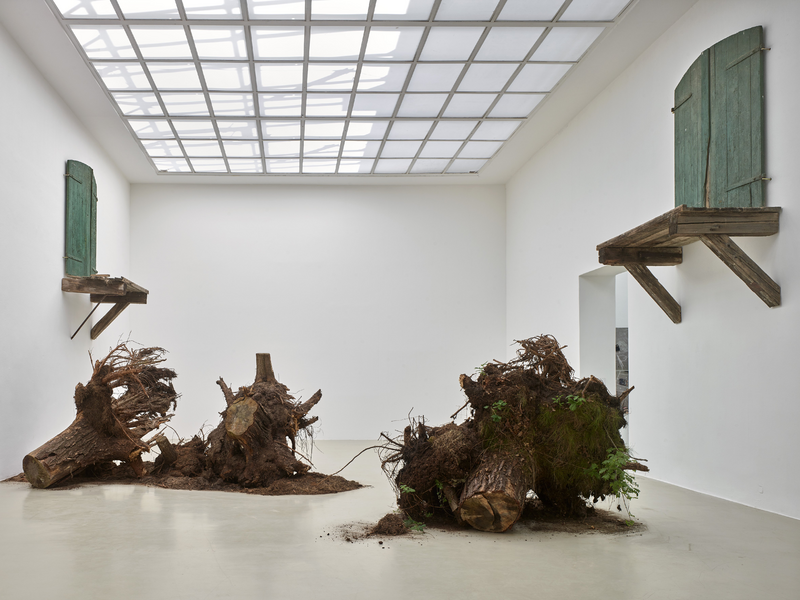
You had the idea for the installation Hurrikan Harvey (Eng. Hurricane Harvey), which was presented at the Kunstverein Hannover for the first time this year, already in 1992 – that’s 30 years ago.
Well to be able to even contemplate presenting this work at all, one needed an appropriate space. I didn’t even start thinking about organising the material needed. The unusual and exceptional process taking place in the world with our many and various climatic excesses – that thought has continued to follow me around. The possibility of presenting the work arose in a room with a very high ceiling in a museum; but the director went to Rome and so nothing became of it. But the climate phenomenon has always been part of my thoughts and has never left me.
In Hanover the work could then be realised?
Yes, the rooms at the Kunstverein are high enough. Then of course I started to make the effort to find the material; for example, these particular double-leaf barn doors and broad ledges. That’s not easy. To order them somewhere – impossible. Then, and this is part of my work as well, I was really lucky.
You got the material?
In an old barn, which belonged to friends of mine and had to be changed to fit contemporary use, I found exactly these types of doors and ledges. Otherwise I would not have been able to realise this work. It came just as the doctor ordered.
Maybe it was meant to be that way – the theme Climate Change is almost more relevant today than it would have been in 1992.
You’ve got it. And do you know what I enjoy about my works? That they are as fresh now as they would have been at the time I thought of them. That they still have so much to say, or maybe they can express even more than they could have when the idea first started. The meaningfulness may also increase; the content become more important or even more relevant.
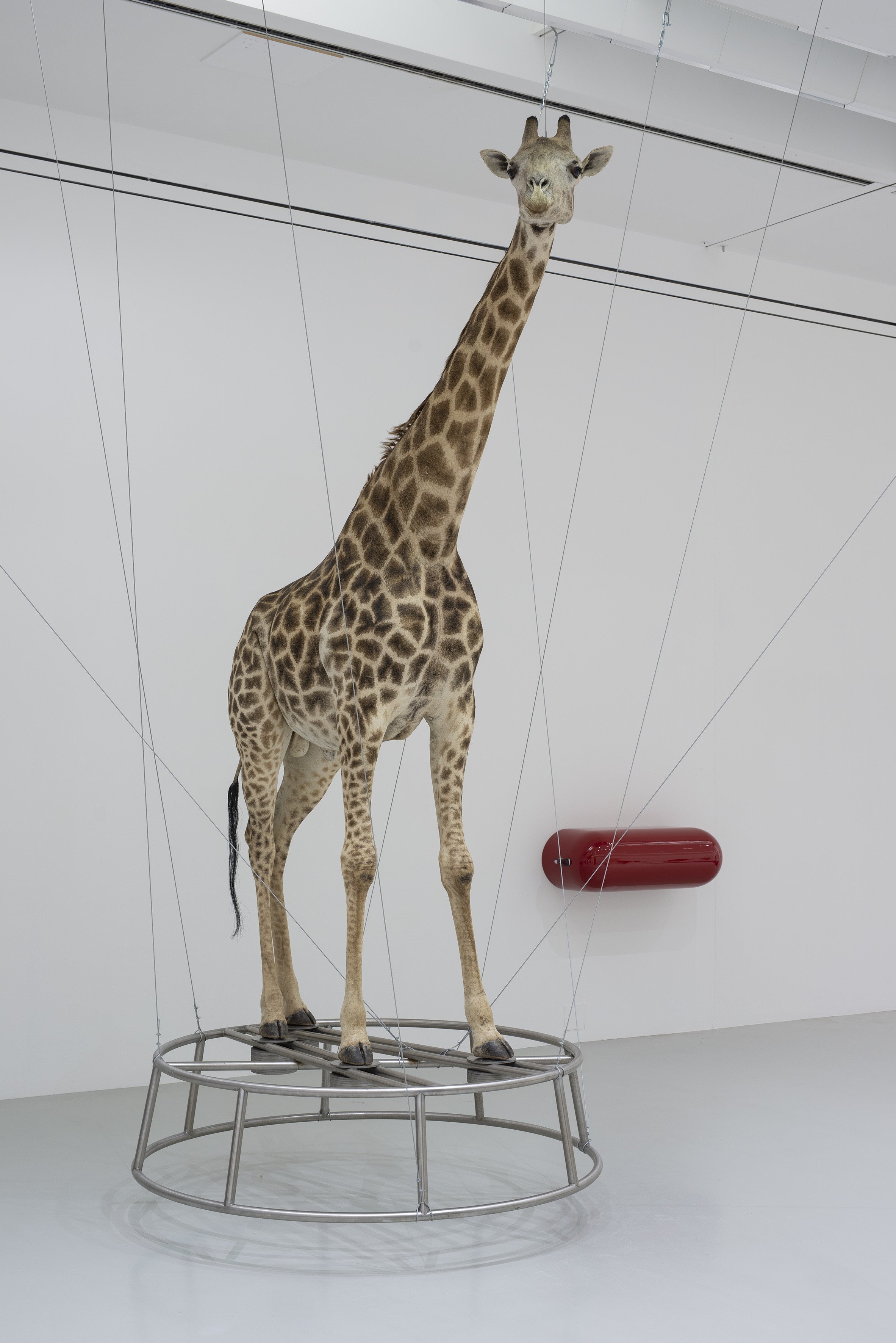
And how did you get to have a giraffe for your work Küsse vom König (Eng. Kisses from the King)?
Well, in the course of time I have come to get to know various taxidermists, one of whom I especially value and who had worked for museums of natural history. I asked him if he saw any possibility of me being able to obtain a giraffe. Then he explained the following situation. The animals come from Africa. Only on very rare occasions, when the chance of survival is endangered because of a scarcity of food, can a single animal be culled out. So, I waited for a few years until the time came. For things like this one needs a great deal of patience. I approached zoos when I was hunting for a polar bear for the work tödlich (Eng. deadly). Zoos are not permitted to sell any animals which have died, to private persons. There is a security procedure. Thank goodness! There are always collectors of trophies who go to Africa and the Arctic to hunt and kill these animals; and this is illegal. I don’t want to have anything to do with illegal things. Otherwise I could go and steal from my neighbour.
But your neighbour doesn’t have a giraffe. This means, the danger of you doing it isn’t very high.
No, but maybe he might have something which I could make use of.
In your work Schneewittchen (Eng. Snow White) I discovered seven small spots or holes in the dark panes. Could you reveal a bit more about them?
Well, if you imagine that you were actually sitting in the driver’s cabin and the object would be moved – one needs to somehow always see where one is going. You were observant!
You can’t tell me that it’s coincidence that there are exactly seven holes – in connection to Snow White!
You counted seven? One can make something out of this! The seven dwarfs! They’ve scratched there! No, but things like that just happen sometimes. Exactly like that. That’s really something. So you are the discoverer of the seven dwarfs in the Snow White work. I like it.
I really hope that I haven’t miscounted.
Not to worry. If there are too many then we can paint over one.
Last question: What role does art play for you today?
I can’t get away from it anymore! The spectrum of ideas which I have – I’m continually thinking of something new; there’s never a sense of idleness and that is something very positive. That’s my life. Of course art brings difficulties with it. But I make the best out of it, as far as I can. I try to make life as delightful as possible!
Author: Elisabeth Pilhofer
Elisabeth Pilhofer is a freelance editor and cultural manager in Munich. In 2012, she happened to see a solo exhibition by Christiane Möbus during a visit to Magdeburg – and was thrilled by her work. Ten years later, she phoned the artist for us to write this interview.
Published: September 2022
Cover picture: Christiane Möbus, der Kuckuck: vom Werden und vom Vergehen (Eng. the cuckoo: of becoming and of passing), 2016, goose feathers, cellan, two panels (C-Print laminated on cardboard honeycomb board), Installation views Kunstverein Hannover (2022); © Christiane Möbus/VG Bild-Kunst Bonn 2022. Photo: Achim Kukulies, Düsseldorf

